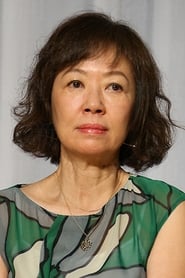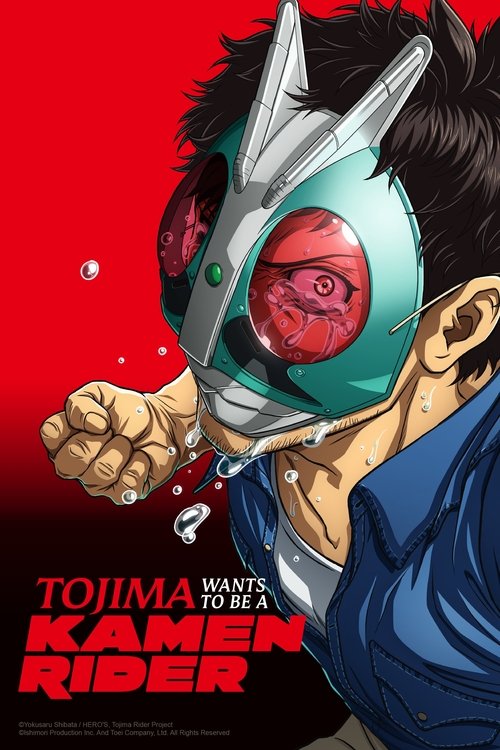
Ask Your Own Question
What is the plot?
In Episode 28 of the TV show "Anpan" (Season 1, 2025), the story begins with Taka visiting a bakery in Ginza. While there, Taka discovers a photograph displayed in the bakery that features a man who strongly resembles Kusakichi, a character played by Sadao Abe. This discovery immediately piques Taka's curiosity and sets the episode's main narrative in motion.
Following this, Taka embarks on a quest to uncover the truth behind the photograph and Kusakichi's past. The episode then shifts to a detailed flashback sequence revealing Kusakichi's earlier life. This flashback explores key moments that shaped Kusakichi's character, including his relationships and significant decisions that influenced his current situation.
The narrative then introduces the backstory of Nobu's parents, Hatako and Yutaro. The episode carefully depicts how Hatako (portrayed by Noriko Eguchi) and Yutaro (played by Ryo Kase) first met. Their meeting is shown with emotional depth, highlighting the circumstances and feelings that led to their connection. This segment is pivotal as it provides context to Nobu's family background and adds emotional weight to the unfolding story.
As the episode progresses, Taka continues to piece together the connections between Kusakichi and Nobu's family. The interactions and revelations deepen the emotional stakes, showing how past events influence the present relationships among the characters.
Throughout the episode, the storytelling maintains a steady pace, focusing on character-driven moments and the gradual unveiling of secrets. The episode concludes with Taka gaining a clearer understanding of Kusakichi's history and its impact on the people around him, setting up further developments for subsequent episodes.
This detailed recounting of Episode 28 covers the discovery of the photograph, the exploration of Kusakichi's past, the love story of Nobu's parents, and the emotional connections that bind the characters, all presented in chronological order without omission of major plot points or character decisions.
Related Titles
Browse All Titles →
What is the ending?
Short Narrative Ending:
In Episode 28 of Anpan, the story reveals the hidden past of Kusakichi, a key supporting character. Through a series of flashbacks and emotional conversations, viewers learn about the hardships and sacrifices Kusakichi endured in his youth, which shaped his quiet, resilient personality. The episode ends with Nobu and Takashi reflecting on Kusakichi's story, feeling a deeper sense of empathy and understanding for the people around them.
Expanded Chronological Narrative:
The episode opens in the present day, with Nobu and Takashi sitting together in a small café near Kochi. The atmosphere is calm, but there is a sense of anticipation as they discuss the recent events in their lives. Takashi mentions that Kusakichi has been acting unusually distant lately, and Nobu wonders if something from his past is troubling him.
Later that afternoon, Nobu visits Kusakichi at his home. She finds him sitting quietly in his garden, staring at an old photograph. When she asks about it, Kusakichi hesitates, then begins to speak. The scene shifts into a flashback, set decades earlier.
In the flashback, a young Kusakichi is shown as a bright, ambitious boy living in a rural village. His family is poor, but he dreams of becoming a teacher. One day, a fire destroys his family's home, and his younger sister is injured. Kusakichi, determined to help, drops out of school to work and support his family. The scenes depict his daily struggles--long hours in the fields, nights spent caring for his sister, and the gradual fading of his own dreams.
As the years pass, Kusakichi moves to the city, where he finds work as a baker. He meets a kind woman who becomes his wife, but she falls ill and passes away young. The flashback shows Kusakichi standing alone at her grave, clutching a small loaf of anpan, a symbol of their shared life.
The scene returns to the present. Kusakichi finishes his story, his voice steady but filled with emotion. Nobu listens in silence, her eyes glistening with tears. She thanks him for sharing his past, and Kusakichi smiles faintly, saying that he never wanted to burden others with his memories.
Later that evening, Nobu and Takashi walk home together. They talk about Kusakichi's story, reflecting on how much he has endured and how his quiet strength has inspired them. Takashi says that everyone carries hidden pain, and Nobu agrees, adding that understanding others' struggles makes life richer.
The episode ends with Nobu and Takashi standing on a bridge overlooking the river, the city lights shimmering in the distance. They share a quiet moment, their bond strengthened by the day's revelations.
Fate of Main Characters:
- Nobu: By the end of the episode, Nobu has gained a deeper understanding of the people around her, especially Kusakichi. Her empathy and compassion are highlighted, showing her growth as a reporter and as a person.
- Takashi: Takashi is shown to be reflective and supportive, helping Nobu process the emotional weight of Kusakichi's story. His character continues to develop as someone who values connection and understanding.
- Kusakichi: Kusakichi's past is fully revealed, and he is portrayed as a man of quiet resilience. His story ends with a sense of peace, as he shares his memories and finds closure.
The episode emphasizes the importance of empathy, the impact of personal history, and the strength found in sharing one's story. Each character's journey is marked by growth, understanding, and a renewed sense of connection to others.
Is there a post-credit scene?
There is no postcredit scene in "Anpan," Season 1, Episode 28, which aired in 2025. The episode concludes with the main narrative, focusing on Nobu and Takashi's daily lives and their evolving relationship amidst the backdrop of postwar Japan. The credits roll directly after the final scene, which centers on Nobu and Takashi sharing a quiet, reflective moment at the newspaper office, discussing their hopes for the future and the challenges they face as young reporters. No additional scene or moment is shown after the credits.
What significant event happens at the bakery 'Mimuraya' in Episode 28?
In Episode 28, Takami invites his classmate Kentaro to visit the bakery 'Mimuraya' in Ginza, which leads to revelations about Kusakichi's past, a character connected to the bakery, deepening the story's exploration of personal histories and relationships.
How does Nobu's relationship with Takashi develop in Episode 28?
Episode 28 continues to show the close friendship and evolving bond between Nobu and Takashi as they navigate their lives during the Showa era, highlighting their mutual support amid personal and societal challenges.
What role does the character Kusakichi play in Episode 28?
Kusakichi's past is a focal point in Episode 28, with the episode revealing important backstory elements that impact the current events and character dynamics, especially related to the bakery and its significance.
Are there any new characters introduced or significant guest appearances in Episode 28?
Episode 28 features Takami's classmate Kentaro, who is invited to the bakery, adding new interpersonal dynamics and contributing to the unfolding narrative around the bakery and its community.
What emotional or dramatic moments stand out in Episode 28?
The episode includes emotionally charged scenes involving the characters' reflections on their pasts and the strengthening of friendships, particularly the poignant moments at the bakery that reveal deeper character motivations and histories.
Is this family friendly?
The TV show Anpan, Season 1, Episode 28 is generally family friendly, consistent with the tone of NHK's Asadora morning drama series. It focuses on the lives, struggles, and aspirations of its main characters, portraying themes of perseverance, family, and personal growth in a gentle and uplifting manner.
That said, as with many dramas set in historical periods, there may be brief references to or depictions of wartime hardships, such as scenes showing the impact of war on families, societal changes, or moments of personal loss. These are presented with sensitivity and are not graphic, but they may evoke mild emotional responses in younger or more sensitive viewers. There are no scenes of violence, explicit content, or strong language. The overall atmosphere remains hopeful and appropriate for a broad audience, including children, with an emphasis on positive values and resilience.


































